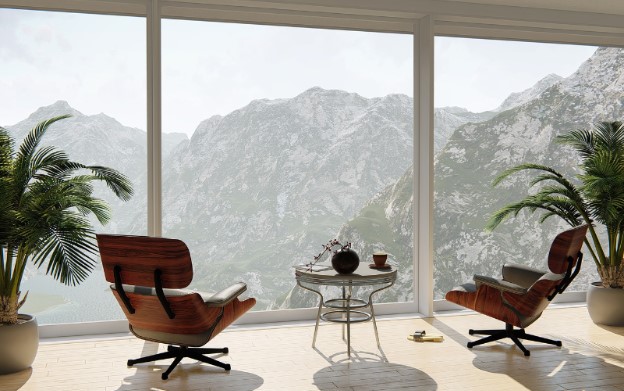Interior design is a field that is both art and science. At its core, it is about transforming a space into something that is both aesthetically pleasing and functional. But there is so much more to interior designing than meets the eye. An excellent interior designer has an eye for design and understands the technical aspects of space planning, lighting, and building codes. In addition, they are experts in colour theory, textile selection, and furniture placement.
In short, they are masters of the art and science of interior design. This article will examine what makes interior design a fascinating and vital field and explore some key concepts and principles designers use to create beautiful and functional spaces. So whether you’re a design enthusiast, a homeowner, or a professional in the field, read on to learn more about the art and science of interior design.
The History of Interior Design
Interior design has a rich history that stretches back thousands of years. People have created and enhanced interior spaces in various styles and traditions from the earliest civilisations to the present. Let’s take a closer look at some of the key moments and movements in the history of interior design:
1. Ancient Civilisations
Ancient cultures, including Egypt, Greece, and Rome, have the oldest instances of interior designing. Interiors in ancient societies were frequently lavishly furnished with intricate carvings, fabrics, and murals. Furniture was typically made from wood or stone and adorned with precious metals and stones. Ancient Egyptians were renowned for their ornate interior designs, which frequently included hieroglyphs and pictures of gods and goddesses.
2. The Middle Ages and Renaissance
The design and embellishment of sacred buildings like churches and cathedrals received the majority of attention during the Middle Ages in interior decoration. Stained glass windows and ornate sculptures were frequently used to decorate these rooms. The Renaissance saw a change in interior design toward secular buildings like palaces and opulent estates. The employment of frescoes and other decorative elements, as well as stress on classical forms and symmetry, were characteristics of the Italian Renaissance.
3. The Industrial Revolution
Interior design started to develop quickly in the 18th and 19th centuries with the start of the Industrial Revolution. The mass production of furniture and ornamental objects made possible by new manufacturing techniques led to the emergence of styles like Art Nouveau and Art Deco. With the establishment of the first interior design schools and professional associations in the late 19th century, interior design also started gaining recognition.
4. The Modern Era
As social and cultural trends changed in the 20th century, interior design continued to advance. For instance, the mid-century modern movement emphasised functionality, simplicity, and clean lines. Conversely, postmodernism encouraged a more varied and frivolous approach to design. The area of interior design is still evolving and active today as designers experiment with new materials, technology, and aesthetics.
Principles of Interior Design

Interior design is a field that combines creativity with practicality and problem-solving skills. Several principles guide interior design, helping designers create aesthetically pleasing but also functional and comfortable spaces. Here are some of the fundamental principles of interior design:
1. Balance
The visible weight of items in a place is referred to as balance. Objects must be placed in a way to produce balance to achieve balance. Asymmetrical and symmetrical balances are the two types of balance. Asymmetrical balance entails arranging objects of various sizes or shapes in such a way as to produce a sense of balance, as opposed to symmetrical balance, which requires placing similar objects on either side of a central axis.
2. Proportion and Scale
Proportion and scale refer to the size of objects in space and how they relate. Achieving the right proportion and scale is crucial for creating a cohesive and harmonious space. For example, a small piece of furniture in a large room may look out of place, while a large piece of furniture in a small room can make the space feel cramped.
3. Rhythm and Repetition
Patterns, colours, and textures are used with rhythm and repetition to give a room a sense of movement and flow. Repeated components like colours, shapes, or patterns can appear united and coherent. Repeating patterns and changing the size, shape, or colour of the items in an area can both be used to produce rhythm.
4. Emphasis
Emphasis is the process of giving a location a central focus. This can be done using colour, texture, a focal piece of furniture or artwork, or all of the above. The transformative design involves changing an area’s look, function, and feel using design elements. Careful planning and attention to detail can transform spaces into inspiring and uplifting environments. Emphasising a specific region of a room can aid in attracting attention and generating visual intrigue.
5. Unity
The term “unity” describes the general feeling of harmony and integration in a place. Creating a sense of flow between various parts of space is necessary for achieving oneness. This can be accomplished using a unified colour palette, recurring textures or patterns, or matching furniture and accent pieces.
Interior designers may design attractive, practical, and comfortable environments for their clients by comprehending and implementing these principles.
The Science of Interior Design

While interior design is often seen as a purely creative field, it has a significant scientific aspect. Understanding the science behind how people interact with their environment can help designers create spaces that are not only visually appealing but also functional and comfortable. Here are some of the fundamental scientific principles that inform interior design:
1. Ergonomics
Ergonomics is the science of designing products and spaces to optimise human well-being and performance. In interior design, this means creating areas that are comfortable, safe, and efficient to use. For example, a workspace should be designed to minimise strain on the neck, back, and eyes, while a kitchen should be prepared to maximise efficiency and minimise the risk of accidents.
2. Psychology of Color
The psychology of colour studies how colours affect human emotions and behaviour. Different colours can have other psychological effects on people, and designers can use this knowledge to create spaces that evoke particular emotions or moods. For example, blue is often associated with calmness and serenity, while red can be associated with energy and passion.
3. Lighting Design
Lighting design is the art and science of using light to create a specific atmosphere or effect in a space. Different types of lighting can be used to create different moods or to highlight particular areas or objects in space. For example, warm, dim lighting can create a cozy and intimate atmosphere, while bright, excellent lighting can create a sense of energy and productivity.
4. Acoustics
Acoustics is the science of sound and how it behaves in different environments. In interior design, this means creating acoustically comfortable and functional spaces. For example, a concert hall must provide optimal sound quality and clarity, while a home theatre should be designed to minimise sound distortion and echo.
5. Environmental Sustainability
Environmental sustainability is the practice of designing and using materials and resources to minimise their impact on the environment. Interior design means using sustainable materials and creating energy-efficient and environmentally responsible spaces. Explorative design dreaming means seeking inspiration from different cultures and experiences to create innovative designs that reflect diversity. It requires an open mind and a curiosity about the world.
Experience Exceptional Interior Design Geelong Services with Architect Bishops
In conclusion, interior design is both an art and a science that requires a skilled and knowledgeable approach. At Architect Bishops, we pride ourselves on offering top-quality interior design services to clients in Geelong and beyond. Our professionals combine their artistic vision with technical expertise to create stunning and functional interior spaces that meet our client’s unique needs and preferences.
From concept to completion, we work closely with our clients to ensure that every aspect of their project is handled with care and attention to detail. Whether interested in a residential or commercial project, we can help bring your vision to life with our services, including interior design in Geelong. To learn more about our company and how we can help you, please visit our website and contact us today to schedule a consultation.

